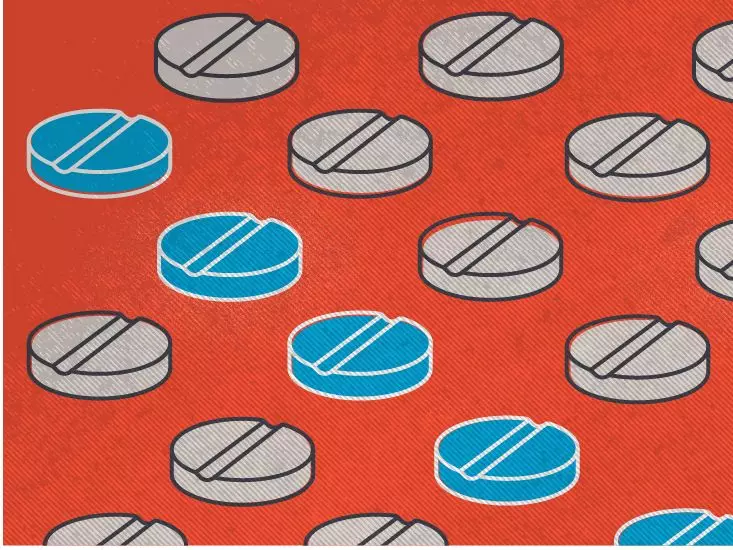Rubraca (rucaparib) has carved its place within the realm of cancer treatments, particularly for those battling advanced ovarian and prostate cancers. However, the journey towards recovery while using this medication is not without its challenges. Patients must be well-informed about the potential side effects accompanying this treatment, as understanding and managing them could significantly influence their quality of life.
The side effects of Rubraca vary widely and can be categorized into common, mild, and serious reactions. While some side effects are manageable and temporary, others may signal more severe underlying issues that necessitate immediate medical attention.
Common Side Effects: What to Expect
Patients undergoing treatment with Rubraca frequently report several common side effects. For those treating ovarian cancer, nausea, vomiting, fatigue, and a skin rash are often among the most prevalent. Meanwhile, men seeking treatment for prostate cancer encounter similar complaints, in addition to issues like diarrhea and fluctuating liver enzyme levels.
The fatigue experienced can be debilitating, discouraging even the most relentless patients. This form of exhaustion is not merely physical; it can extend to emotional and psychological realms, making it necessary for those on Rubraca to employ proactive management strategies. Common tips include maintaining a nutrient-rich diet and engaging in light physical activity, which can help combat fatigue and enhance overall well-being.
Recognizing Mild Side Effects
While mild side effects are often less concerning, they still require the patient’s diligence. Symptoms such as headaches, appetite changes, and occasional dizziness can arise without warning. Though these reactions typically subside within a few days or weeks, persistent or worsening symptoms should always elicit a consultation with a healthcare professional.
Patients must remember that each individual’s response to drugs can significantly differ. Maintaining open communication with healthcare providers enables patients to address conditions proactively rather than reactively, leading to a more personalized treatment approach.
The Serious Side of Side Effects
One of the most alarming aspects of cancer treatment is the prospect of serious side effects. Rubraca’s potential to induce severe allergic reactions, for example, requires immediate attention. Symptoms can range from mild rashes to life-threatening issues such as difficulty breathing. Therefore, recognizing the signs of a serious reaction and knowing when to act are crucial.
Moreover, blood cell-related side effects such as thrombocytopenia and anemia can complicate treatment regimens. Thrombocytopenia—characterized by a low platelet count—can lead to excessive bleeding, while anemia can result in debilitating tiredness and discomfort. Patients must be vigilant about monitoring their health and promptly reporting any concerning symptoms to their healthcare providers.
Managing Side Effects Effectively
Despite the daunting nature of these side effects, there are several management strategies that can significantly alleviate the burden. For instance, the frequent nausea resulting from Rubraca may be countered by taking antiemetic medications and adjusting dietary habits — smaller, more frequent meals can be beneficial, as can avoiding greasy foods.
In cases of skin sensitivity posed by Rubraca, protection against sun exposure becomes paramount. Sunscreen, protective clothing, and limited sun exposure can safeguard patients from severe reactions, allowing them to continue their treatment without adding further complications.
Furthermore, for patients experiencing blood-related side effects, routine monitoring and regular blood tests can provide insight into their health status, empowering healthcare providers to adjust treatment accordingly. Such proactive measures illustrate the importance of a patient-centered approach to managing the side effects of Rubraca.
Empowering Patient Voices
The importance of reporting side effects cannot be overstated. The FDA monitors drug safety through channels like MedWatch, which encourage patients to share their experiences. This feedback loop not only enhances the safety profiles of medications like Rubraca but also empowers future patients by providing them with a clearer understanding of what to expect.
Participating in this endeavor cultivates a community of informed patients who can support one another through their experiences. Knowledge is power in healthcare, and sharing insights regarding side effects can take the stigma away from discussing adverse reactions, making it easier for new patients to seek help.
By fostering an environment of open dialogue between patients and healthcare providers, we can improve the standards of care and make treatments like Rubraca as effective and bearable as possible. Patients facing cancer shouldn’t have to feel alone in their battle against the disease. Instead, they should be recognized as informed participants in their treatment journey, ready to tackle the challenges that come their way.

